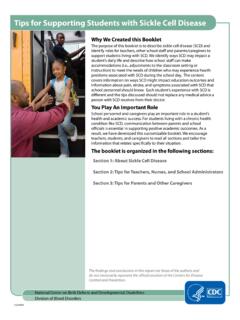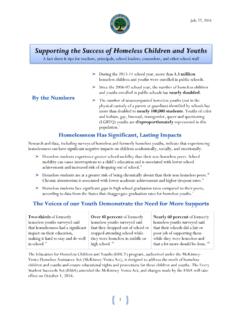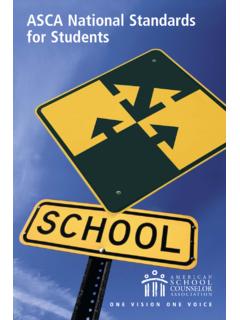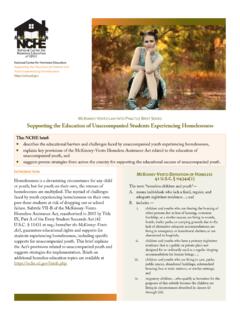Transcription of Building Student Success with Constructed Responses
1 Building Student Success with Constructed Responses First District RESA 2014-2015 What is a Constructed response ? Turn and Talk to a Share out ideas. Possible Several sentences to answer a question Combining information from various sources Writing a long essay or passage to respond to a prompt A hard concept to teach! What does this picture have to do with Constructed Responses ? Don t have formulaphobia The nature of constructing something is that it is carefully and deliberately put together. Providing students with a structure can aid them in writing stronger Responses that demonstrate deep thinking. A formula not only ensures the essential components are included but also that they are communicated succinctly and concisely. source: Teach Constructed - response Writing Explicitly, Learning Targets Follow steps in a process for guiding students in analyzing a prompt, finding evidence in texts, answering text based questions, and writing an appropriate response .
2 Examine sample test items and discuss how to use them in supporting Student skill development and confidence. Understand how to plan a set of lessons that provide modeling, guided practice, and independent practice. Steps for Building a Constructed response the prompt the text to find evidence a plan to organize evidence the response The Critical Process Modeling: I do one, you ll watch. Guided practice: I do one, you ll help. Gradual release: You do one, I ll help. Independent practice: You do one, I ll watch. Learn Zillion Model with Text Prompt: The article tells the story of four adults in very different jobs. What do all four of the professionals have in common? How do you know? Step 1: Interpreting the Prompt Read/underline important words and phrases to determine the type of writing needed: narrative, informational or opinion Identify the background information, the task or request (analyze, explain, ), and the type of evidence needed (details from text, personal experience, information from multiple texts, etc.)
3 Summarize and restate the prompt in your own words One List things all four professionals have in common and support this with evidence from the text. Can you think of another way to restate the prompt? Why would we ask students to read and restate the prompt? All Together Now The article tells the story of four adults who got the jobs they wanted since childhood. What is similar about their current attitudes about their jobs? Support your claims. Does this capture it? Find evidence in the text about how the four professionals feel about their jobs now. Write about feelings that they all have in common using details from the text. Step 2: Analyzing the Text to Find Evidence Skim text to find evidence to support the response Refer to close reading notes to find specific words/phrases rather than re-reading entire passage Look at text features and structures for evidence Record evidence on appropriate graphic organizer for the task/genre Questions for Close Reading.
4 Must be done first, then the Student will be prepared to work on Constructed response prompts What are the childhood dreams of each person? How did reading at an early age influence each of the four people in the article? In the article, When I Grow up I want to what do Benjamin Carson and Sheila Hensley have in common? What specific quotes help you make an inference about Russ Mittermeier? In what ways do the details of When I grow up I want to help you determine the main idea? Begin Comparison From our close reading notes, we learned many details about the 4 professionals in this text. Now we must compare them to find out what they all have in common. Start with 2, then move on to all 4. Eun and Benjamin Eun Yang Pretended to be a TV reporter Wanted a job on television Got good grades Played with friends outside Read a lot Good at public speaking Adults discouraged her Studied broadcasting in college Interned at TV station Is anchor on NBC4 morning news Benjamin Carson Wanted to be a doctor Grades skyrocketed Became a bookworm Was poor and bad Student Went to medical school Is now doctor at Johns Hopkins Create a Table to Compare All 4 Common factors for Eun and Ben Eun Benjamin Sheila Russ Interest @early age New reporter surgeon teacher Jungle explorer Read alot All the time Became a bookworm NO Does not say Good grades Worked hard Grades skyrocketed NO Does not say Faced challenges Adults discouraged her Poor and bad Student dyslexia Lived in NYC no jungle Studied in field college Med school Does not say Studied monkeys Realized dream TV news anchor
5 Surgeon @ Johns Hopkins Prek teacher Primate expert Step 3: Making a Plan to Organize Evidence Create a general answer to the question or state the main idea (thesis statement) The four professionals in this article were interested in their careers at early ages, faced challenges, and realized their dream jobs. The four professionals in this article stuck with their dreams over time. The four professionals in this article committed themselves to lifelong journeys in their chosen fields. Step 3: Making a Plan to Organize Evidence Organize evidence by category, chronological order, cause-effect, etc. to match the task Four body paragraphs, one for each professional evidence on their early interest, their challenges, and how they realized their dream will make up the details for each paragraph. Step 4: Writing the response Opening starts with main idea sentence, the thesis statement which answers the question/prompt Use each piece of evidence from graphic organizer to create sentences/body paragraphs that support the main idea Close with a summary or conclusion or solution that answers the question in different words Opening paragraph Main idea and thesis statement for entire piece Includes supporting details to introduce main points Starts with a hook or a question to interest the reader Opening Paragraph where are the components?
6 The four professionals in this article committed themselves to lifelong journeys in their chosen fields. How can you get your dream job? Each of them recognized a desired path early in life, stayed on course despite bumps in the road, and reached the destination. An article in KidsPost took a look at what people who achieved their childhood dreams had in common. Does yours look something like this? How can you get your childhood dream job? An article in KidsPost took a look at what people who achieved their childhood dreams had in common. The four professionals in this article committed themselves to lifelong journeys in their chosen fields. Each of them recognized a desired path early in life, stayed on course despite bumps in the road, and reached the destination. Body Sentences or Paragraphs Three steps for writing the supporting body paragraphs: Expand each similarity into one or more sentences.
7 Cite by mentioning text. Quote by writing exact words in quotation marks. Benjamin Carson Young Benjamin Carson wanted to become a doctor. He was poor and not a good Student . The second page of the article tells us that one day his mom came home from work and turned off the TV for good. Benjamin turned into a bookworm, and his grades skyrocketed. He went on to become a doctor, at Johns Hopkins. His dream was fulfilled! Closing Paragraph the main points. a conclusion. your response -- restate the question from the introductory paragraph and then answer it. Summary: Eun Yang, Benjamin Carson, Sheila Hensley, and Russ Mittermeier were all interested in specific careers from an early age. Each experienced challenges, but they all persevered and finally reached their dreams. Conclusion: Even though they hold very different positions, their similar paths might just teach us something.
8 Frame: So how can you get your childhood dream job? These four have shown us that you just need to start off toward your destination and stay on track. Closing Paragraph Eun Yang, Benjamin Carson, Sheila Hensley, and Russ Mittermeier were all interested in specific careers from an early age. Each experienced challenges, but they all persevered and finally reached their dreams. Even though they hold very different positions, their similar paths might just teach us something. So how can you get your childhood dream job? These four have shown us that you just need to start off toward your destination and stay on track. Step 5: Revising Include transition or linking words/phrases Use a variety of sentence types Add interesting word choice ( wow words) Check CAPS: capitalization, agreement (subj/verb), punctuation, and spelling Re-read the prompt and your response Did I answer the question completely?
9 Did I add interesting language, varied sentence types and transition words? Did I check for correct punctuation, grammar, and other conventions? Does my response make sense? Prompt: The article tells the story of four adults in very different jobs. What do all four of the professionals have in common? How do you know? Benjamin Carson, revised In comparison, young Benjamin Carson yearned to become a doctor. He was underprivileged and not a good Student . The second page of the article tells us that one day his mom came home from work and turned off the TV for good. Consequently, Benjamin metamorphosed into a bookworm, and his grades skyrocketed. He went on to become a doctor, specifically a neurosurgeon, at Johns Hopkins. His dream was fulfilled! Constructed response Interpreting the Prompt Analyzing the Text to Find Evidence Making a Plan to Organize Ideas Writing the response Revising Read the Prompt Underline the important words and phrases Summarize and restate the prompt Is it a narrative or informational or opinion task?
10 Which thinking skill do I need to use? Record Evidence on graphic organizer Use notes from close reading Look at text features and structure Skim text to find evidence Organize the evidence and make a plan for written response Organize notes by category, chronology, comparison, etc. Create a general answer to question Write main idea or thesis statement Use evidence to create body paragraphs Write an opening sentence that includes the big idea Close with a summary, conclusion or solution that answers the prompt Write each of your bullet points in a sentence using your own words Write in complete sentences Add main supporting details Begin with a hook: a question or interesting phrase Restate the main idea in a different way Re-read the question or prompt Make your writing more interesting to read Check answer with an eye for corrections Re-read the answer to make sure it fully answers the question Add transition words or phrases Use wow words Use a variety of sentence types Punctuation and capitalization check Grammar and language usage Graphic based on Learn Zillion lessons and Sue Ellen Patterson s work How can this process be used to help students build Constructed Responses ?

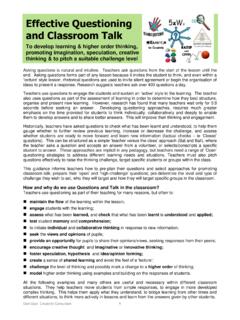
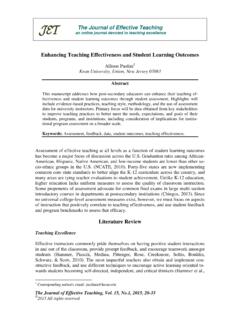
![[STUDENT ACHIEVEMENT FACTORS] - ed](/cache/preview/5/b/7/7/7/3/a/d/thumb-5b7773ad29f4cb9f9299867670f10529.jpg)

